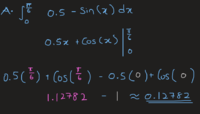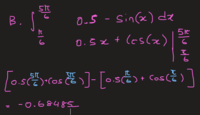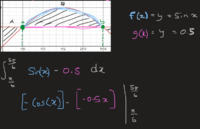Jacob
New member
- Joined
- Jan 27, 2019
- Messages
- 41
Hi, I need help with 2 things. (I found the graph for this solution by using graphing calculator)
1. May I know how I can find the x-intercept = 5π/6? I found π/6 by letting sinx=0.5 and solve for x but Idk how I can find 5π/6.
2. Is my integral form correct to find the area of A?
My goal is to find the Area A+B+C.

1. May I know how I can find the x-intercept = 5π/6? I found π/6 by letting sinx=0.5 and solve for x but Idk how I can find 5π/6.
2. Is my integral form correct to find the area of A?
My goal is to find the Area A+B+C.




